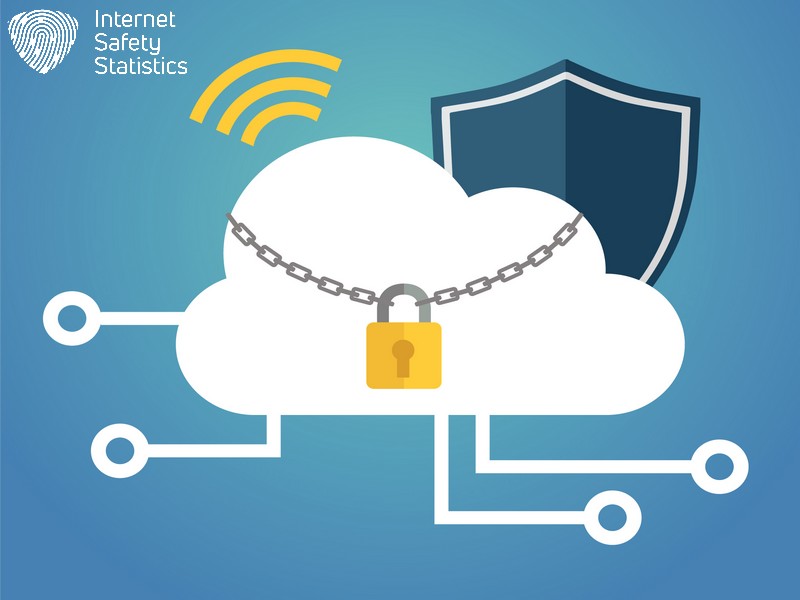
Are you worried about the safety of your personal or work data on the cloud? With cyber threats on the rise, protecting our digital information has never been more critical. As cyber threats continue to evolve, robust data protection measures are essential. This guide explores the essentials of cloud security. We’ll delve into best practices for safeguarding your information, including encryption methods, access controls, and choosing reliable cloud service providers. This blog post will guide you through essential cloud security practices to safeguard your data against unwelcome eyes and potential breaches.
Stay secure with us!
Understanding Cloud Security
Cloud security is the practice of protecting cloud-based data and applications from cyber threats. It is essential for safeguarding sensitive information and maintaining trust with customers and users.
Definition of Cloud Security
Cloud security is all about protecting your digital data using internet-based storage and services. Think of it as a shield that keeps everything safe, from personal photos to critical work documents, whenever they live online in the ‘cloud’. It combines technology, controls, policies and practices to safeguard data from threats like hackers and malware. It also stops accidental leaks caused by human mistakes or sneaky insider threats.
To make this happen, cloud environments use a mix of encryption methods to scramble your data so only authorised people can read it. They employ authentication processes that ensure the person accessing information is who they claim to be. All these measures are wrapped up into what we call ‘cybersecurity’, ensuring confidentiality and protection for everyone’s benefit – whether you’re managing family memories or crucial business files.
Importance of Cloud Security
Cloud security is essential for protecting your data from cyber threats and unauthorised access. Choosing a trusted cloud service provider ensures your data is stored and managed securely, safeguarding it from potential breaches. Implementing strong authentication methods such as multi-factor authentication adds an extra layer of protection to prevent unauthorised users from accessing sensitive information.
Encrypting data before storing it in the cloud helps maintain confidentiality and prevents unauthorised parties from accessing or understanding the data. Regularly updating and patching systems and software is crucial for addressing vulnerabilities and maintaining robust security measures. Understanding user agreements with cloud service providers enables you to make informed decisions about how your data will be handled, ensuring that you take necessary precautions to keep it safe.
Benefits of Cloud Security
Cloud security has incredible benefits in an ever-evolving cyberspace. From adding extra protection from cybersecurity threats to helping organisations comply with cybersecurity regulations, the cloud is the future of cybersecurity.
- Protects against security threats, including DDoS attacks, malware, and hackers.
- It helps prevent human errors and insider threats that can compromise data security.
- Ensures compliance with regulations to maintain legal and ethical data practices.
- Safeguards your sensitive information from unauthorised access or breaches.
- Provides peace of mind through robust measures for maintaining data security.
Common Risks and Challenges
Some of the risks associated with cloud security include data breaches, misconfigurations, and insider threats, which are common risks and challenges associated with cloud security. Understanding these risks is crucial in developing effective security solutions.
Data Breaches
Data breaches pose a significant threat to data security in the cloud. Cybercriminals can gain unauthorised access to sensitive information, compromising confidentiality measures. Implementing robust security controls and encryption methods is crucial for protecting data from these breaches. Regularly updating and patching systems can also help mitigate vulnerabilities that may lead to potential breaches.
Cloud security measures aim to safeguard against various risks, including data breaches caused by malicious actors seeking unauthorised access. Office workers, internet users and parents must be vigilant about the potential risks of data breaches when storing sensitive information in the cloud.
Misconfigurations
Misconfigurations in cloud security can lead to vulnerabilities that put your data at risk. Regularly updating and patching systems is crucial to prevent misconfigurations that could expose your data to potential breaches.
Implementing strong access controls and defining and enforcing these measures are essential for safeguarding against misconfigurations that may compromise your data security. It’s important to educate employees on the significance of adhering to proper security practices, such as avoiding risky configurations, to minimise the likelihood of errors leading to data exposure.
Cloud providers offer tools and guidelines for preventing misconfigurations, such as automated monitoring services that detect configuration errors and prompt corrective actions. These protocols help strengthen overall cloud security by identifying vulnerabilities caused by misconfigured settings or unauthorised access permissions.
Insider Threats
Insider threats pose a significant risk to cloud security. Employees or contractors with access to company systems and data can intentionally or unintentionally compromise the security of sensitive information. This could include leaking confidential data, introducing malware into the system, or falling victim to social engineering attacks. Educating employees on cybersecurity best practices and implementing strict access controls are crucial to preventing insider threats.
To safeguard against these risks, organisations must establish clear policies regarding data access and use encryption technologies to prevent unauthorised viewing of sensitive information. Regular monitoring for unusual activities within the cloud environment further strengthens protection against insider threats while promoting a secure work culture.
Cloud Security Solutions
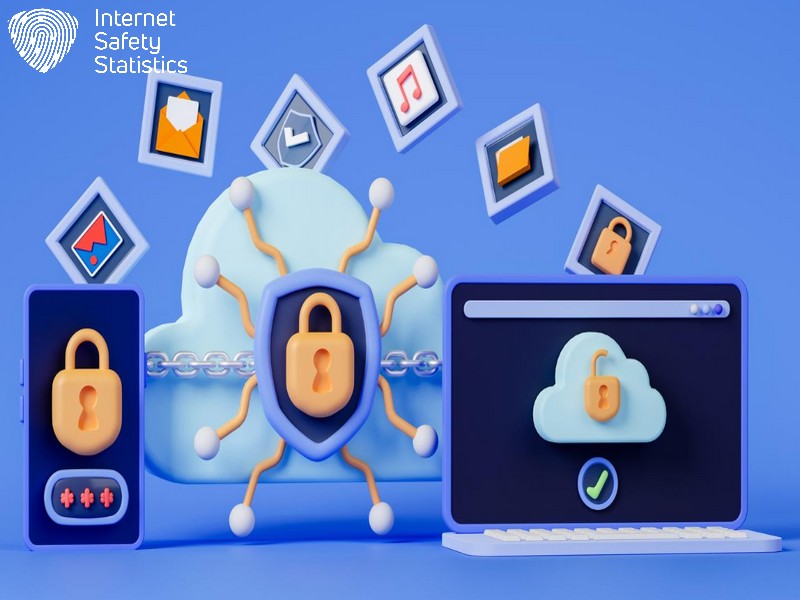
Utilise encryption, access control, data loss prevention, intrusion detection and prevention, disaster recovery and business continuity planning to keep your data safe in the cloud.
Encryption
Data encryption is a crucial practice for securing sensitive information in the cloud. Encryption converts data into complex code, making it unreadable to unauthorised users. This helps protect data from potential security threats and breaches, ensuring that it remains secure even if the data is intercepted. Implementing robust encryption methods adds an extra layer of protection to your valuable digital information, safeguarding it from cyber criminals and unauthorised access.
Implementing strong encryption measures aligns with best practices for maintaining cloud security. It ensures that your data is protected from potential vulnerabilities and threats in the cloud environment.
Access Control
To maintain data security in the cloud, defining and enforcing access controls is crucial. Access control refers to managing and regulating who has permission to access certain resources within a cloud environment. This involves implementing authentication methods, such as passwords or biometrics, to verify the identity of users before granting them access to sensitive data or applications. Additionally, access control allows administrators to set specific permissions for different users based on their roles and responsibilities, ensuring that only authorised individuals can view or modify certain information.
Organisations can reduce the risk of unauthorised access and potential data breaches in the cloud by enforcing strong access controls. Implementing robust access control measures also helps protect against insider threats by limiting employees’ ability to misuse or steal confidential data. With appropriate role-based permissions and continuous monitoring of user activities, businesses can prevent internal security incidents while maintaining compliance with regulations related to data protection in cloud environments.
Data Loss Prevention
When it comes to keeping your data safe in the cloud, data loss prevention is critical to cloud security. This practice involves implementing measures to avoid accidental or intentional data breaches, leaks, or deletions. Encryption is key in preventing unauthorised access to sensitive information stored in the cloud, safeguarding it from potential loss or theft. Regularly backing up your data and robust disaster recovery plans are vital components of effective data loss prevention strategies.
Implementing strict access controls and defining user permissions can significantly reduce the risk of unauthorised individuals accessing and potentially deleting valuable data. Educating employees about best practices for handling sensitive information and ensuring their understanding of security protocols further strengthens the prevention of data loss incidents in cloud environments.
Intrusion Detection and Prevention
Cloud security measures include intrusion detection and prevention to safeguard your data from unauthorised access. Using advanced technologies and monitoring tools, intrusion detection systems actively scan network traffic for signs of potential threats or breaches.
These systems provide real-time alerts and notifications to quickly address suspicious activities, helping prevent security incidents and protect sensitive information. Implementing robust intrusion detection and prevention mechanisms is crucial in maintaining the integrity and confidentiality of your data in cloud environments.
Intrusion detection systems are vital in identifying unusual patterns or behaviours within the network, allowing for proactive responses to potential security risks. By leveraging these solutions, businesses can effectively mitigate the impact of cyber threats and ensure a secure cloud computing environment.
Disaster Recovery and Business Continuity Planning
Incorporating disaster recovery and business continuity planning is crucial. It involves developing strategies to ensure critical functions can continue during and after a disaster. This includes having backup systems, data protection measures, and clear protocols for restoring operations. By doing so, businesses can minimise downtime and data loss during a cyber-attack or natural disaster. Additionally, regularly testing these plans ensures they are effective when needed most.
Best Practices for Keeping Data Safe in the Cloud
Choose a trusted cloud service provider, use strong authentication methods, regularly update and patch systems, secure endpoints, and define and enforce access controls. Ready to keep your data safe in the cloud? Here are some of the best steps to ensure solid cloud security.
Choose a Trusted Cloud Service Provider
Selecting a reputable and reliable cloud service provider is crucial for ensuring the safety of your data in the cloud. By opting for a trusted provider, you can have confidence that your sensitive information will be safeguarded against security threats and unauthorised access. It’s essential to thoroughly research and assess potential service providers, considering their track record, security measures, compliance certifications, and customer reviews. The right cloud service provider should offer robust security protocols, transparent privacy policies, and proactive monitoring to secure your data from cyber threats.
When entrusting your data to a cloud service provider, it’s vital to prioritise security features and capabilities over cost or convenience. Before deciding, conduct thorough due diligence regarding the provider’s encryption practices, access controls, vulnerability management processes, and identity management protocols.
Use Strong Authentication Methods
Implement strong authentication methods such as two-factor authentication to add an extra layer of security when accessing cloud services. This includes using a combination of something you know, such as a password, and something you have, like a unique code sent to your mobile device. Strong authentication helps prevent unauthorised access and enhances the overall security of your data in the cloud.
Deploying biometric authentication methods, including fingerprint or facial recognition, can strengthen security measures for accessing cloud resources. By requiring multiple factors for user verification, strong authentication methods significantly reduce the risk of unauthorised access and help protect sensitive information stored in the cloud.
Regularly Update and Patch Systems
To maintain a secure cloud environment, updating and patching systems regularly is crucial. This practice helps to fix vulnerabilities and bugs in software and operating systems, reducing the risk of exploitation by cyber threats. Here are some key considerations for regularly updating and patching systems:
- Implement automatic updates for software and operating systems to ensure that the latest security patches are applied promptly.
- Regularly check for updates from trusted sources and apply them as soon as they become available to address any known security issues.
- Prioritise critical security updates and patches to safeguard against emerging threats that could compromise data security.
- Conduct regular vulnerability scans or assessments to identify potential weaknesses in systems and applications, enabling timely remediation through patching.
- Establish a schedule for regular maintenance windows, during which system updates and patches can be applied without disrupting essential operations.
- Monitor industry news and advisories for information about newly identified vulnerabilities and corresponding patches, ensuring systems remain protected against evolving threats.
- Document update processes and maintain records of applied patches to facilitate auditing, compliance, and troubleshooting efforts.
- Test software updates and patches in a controlled environment before deploying them across production systems to minimise the risk of compatibility issues or unexpected disruptions.
Secure Endpoints
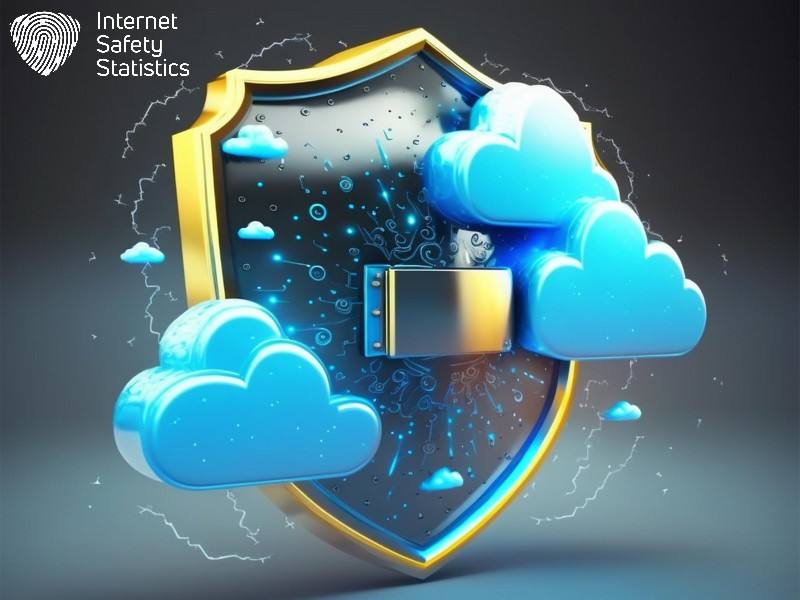
It is crucial to secure endpoints to keep your data safe in the cloud. Ensure all devices, such as laptops, mobile phones, and tablets, have up-to-date security software and firewalls. Implement robust access controls on these devices to prevent unauthorised users from gaining access to sensitive data. Regularly update and patch endpoint systems and applications to protect against emerging security threats.
Educate employees on the importance of securing their endpoints using strong passwords and avoiding risky internet browsing habits. Implementing multi-factor authentication methods is also essential for securing endpoints. Adding an extra layer of protection beyond just a password can significantly reduce the risk of unauthorised access to your data.
Define and Enforce Access Controls
Access controls define who can access what data and under what circumstances. This means setting up user permissions to limit the information each individual can access, edit, or share within the cloud environment.
Enforcing strong access controls ensures that only authorised personnel can access sensitive data, reducing the risk of unauthorised breaches or leaks.
Implementing strict access control measures involves using multi-factor authentication, role-based access control (RBAC), and robust password policies. Regularly reviewing and updating these controls are crucial to adapting to changing security threats and maintaining a secure cloud environment.
Educate Employees on Security
Implement regular security training sessions for all employees to ensure they understand the importance of data protection. Emphasise the significance of strong authentication methods and encryption techniques in safeguarding sensitive information stored in the cloud. Educate them about recognising and reporting potential security threats, such as phishing attempts and suspicious email attachments, to enhance overall cybersecurity awareness within the organisation.
Share informative resources on best practices for maintaining data privacy and securing endpoints with employees. Encourage a culture of vigilance by promoting constant system updates and patching to mitigate vulnerabilities that cyber attackers could exploit.
Future Trends in Cloud Security
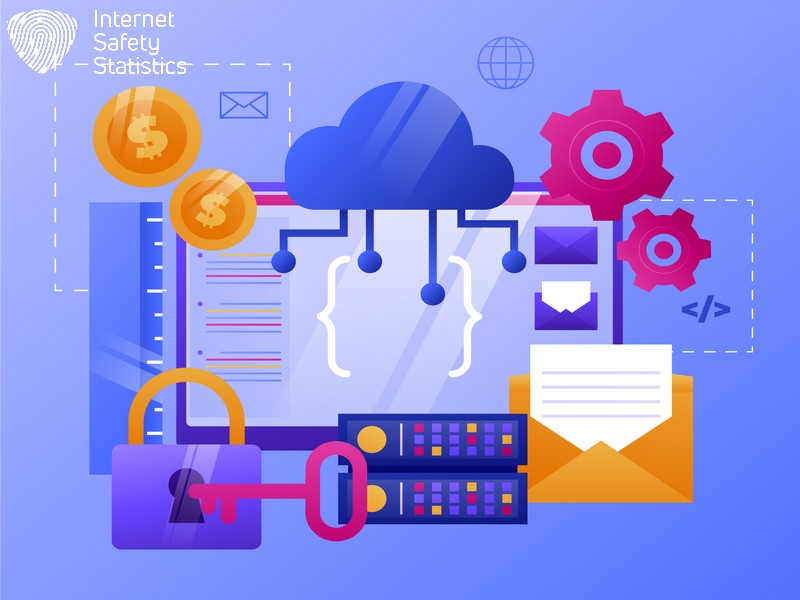
Cloud security is expected to evolve by integrating AI-driven security solutions, multi-cloud security strategies, DevSecOps practices, zero-trust architecture principles, and advanced cyber threat monitoring on the dark web. These trends will enhance data protection and ensure a more secure cloud environment for businesses and individuals.
AI-driven Security Solutions
AI-driven security solutions utilise artificial intelligence and machine learning to enhance cloud security measures. By continuously analysing vast amounts of data, AI algorithms can quickly identify potential threats and vulnerabilities, enabling proactive risk mitigation. These advanced technologies can also help automate threat detection and response, strengthening overall cybersecurity posture.
Moreover, AI-driven security solutions are crucial in identifying suspicious patterns or abnormal behaviour that human-centric approaches might miss. With the ability to adapt and learn from new data inputs, these solutions are well-equipped to tackle evolving cyber threats effectively.
Multi-Cloud Security
Multi-cloud security involves securing data and applications across multiple cloud platforms. Businesses must ensure their data remains safe and protected when utilising multiple cloud providers.
Implementing consistent security measures, access controls, and encryption protocols across all clouds is essential to prevent unauthorised access and data breaches. By adopting a multi-cloud security strategy, organisations can mitigate the risk of cyber threats and ensure the integrity of their digital information.
Incorporating multi-cloud security solutions such as strong authentication methods, network security measures, and encryption technologies provides a layered approach to safeguarding data across diverse cloud environments.
DevSecOps
DevSecOps plays a crucial role in ensuring the security of cloud-based systems. This approach integrates security practices earlier in the software development process, making it an essential aspect of modern cloud security. By incorporating security into the development and operations workflow, DevSecOps helps identify and address potential vulnerabilities throughout the entire lifecycle of applications and infrastructure.
With a focus on collaboration between development, operations, and security teams, this methodology aims to create a culture of shared responsibility for security within cloud environments. Implementing DevSecOps practices involves automating security testing processes to detect and remediate any issues early in the development cycle. This proactive approach enhances cyber resilience by minimising the risk of data breaches and cyber-attacks.
Zero-Trust Architecture
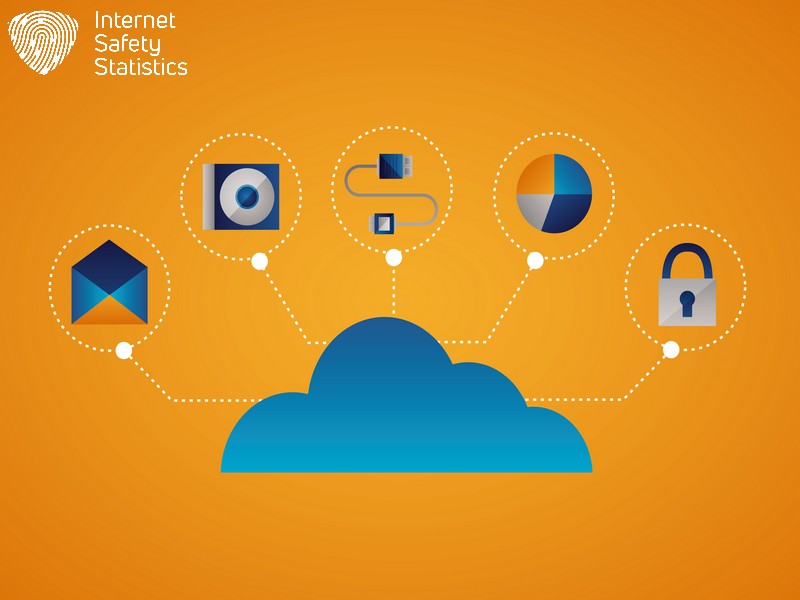
Implementing a zero-trust architecture means not automatically trusting anyone or anything inside or outside of the network. It involves verifying and validating every access request to systems and data, regardless of whether they are within or outside the organisation’s perimeter.
This approach ensures that even if a threat actor gains access to the network, they cannot move freely within it. With zero-trust architecture, organisations can enforce strict access controls and continuously monitor for any signs of compromise, helping mitigate insider threats and unauthorised external access risks.
Employing a zero-trust architecture is crucial in today’s digital landscape, where cyber threats continue to evolve. By implementing this security model, businesses can significantly reduce their vulnerability to data breaches and cyber-attacks while enhancing overall cloud security measures.
Cybersecurity Dark Web Monitoring
Transitioning from the concept of zero-trust architecture, it’s essential to address the significance of cybersecurity dark web monitoring in safeguarding your data. The dark web is a hotbed for cyber threats and illegal activities, making it crucial to monitor this hidden network for any potential security risks. Organisations can avoid potential security breaches by actively tracking the dark web for stolen credentials, sensitive information, or impending threats and take proactive measures to protect their digital assets.
Cybersecurity dark web monitoring is pivotal in early threat detection and mitigation, as it identifies compromised data before it leads to significant breaches. Monitoring services can provide real-time alerts about compromised employee credentials or leaked company information on the dark web, enabling swift action to mitigate risks and prevent unauthorised access to sensitive data.
In conclusion, cloud security is essential for keeping your data safe. Strong authentication methods must be implemented to protect against insider threats and human errors. Choosing a trusted cloud service provider and regular updates are crucial best practices for maintaining cloud security. Educating employees on security measures also plays a significant role in safeguarding sensitive information in the cloud. To stay ahead of evolving cyber threats, embracing future trends like AI-driven security solutions and zero-trust architecture for robust data protection is vital.
FAQs
1. What is cloud security?
Cloud security includes data encryption and application security that protect your digital information when you store it on the internet.
2. Why is cyber security important for cloud storage?
Cyber security is crucial because it defends against online attacks, keeping your stored information safe from unauthorised access and breaches in infrastructure security.
3. How do I ensure my applications are secure in the cloud?
To keep applications secure in the cloud, regularly update them and use application security techniques to shield sensitive data.
4. Can data encryption keep my information safe online?
Yes, using strong data encryption methods is one of the best ways to protect your private information while using cloud services.
